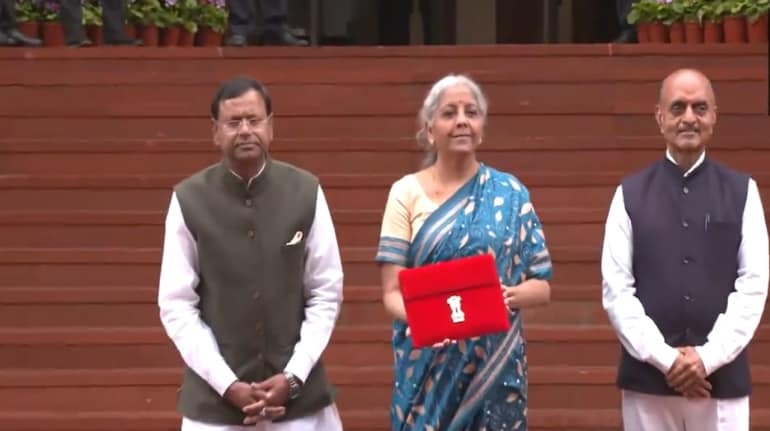
The Monetary Policy Committee (MPC) began deliberations on the second bi-monthly monetary policy for FY22 on June 2, 2021 and will announce its decision on June 4, 2021. While monetary policy meetings and the central bank's projections are always keenly observed, the backdrop for MPC meeting this time around is unique and challenging.
Below, we list the key considerations before the MPC in the June 2021 policy review:
Firstly, the second wave of COVID-19 has caused significant human and economic damage. The second wave unfolded rapidly and took several stakeholders by surprise with its speed and severity. This was in line with global experience as second waves in most countries took far bigger human and economic toll compared to the first waves. While the government did not respond with nationwide lockdown similar to the first wave, the large number of infections and deaths led to several state governments imposing localised restrictions for prolonged periods of time.
As a result, the economic recovery which was already fragile and patchy, lost further steam. Most high-frequency indicators reflected this loss of momentum: bank credit growth and PMIs fell in sequential terms, passenger and cargo traffic indicators remained weak, and mobility indicators dropped.
Also, unemployment rate surged to 10.2 percent in May 2021, a level not seen since June 2020. This is also reflected in growth numbers. While the recently-released GDP growth numbers for Q4FY21 and full-year FY21 were better-than-expected, they pointed to divergent recovery within the economy. The performance of manufacturing and construction sectors was surprisingly good, while contact-intensive sectors such as trade, public administration and agriculture played a drag on growth. Also, core GVA-Gross value added (excluding agriculture and public administration) grew 4.4 percent, recording a higher-than-headline growth.
This indicates that the non-agriculture private sector (manufacturing, construction, financial services etc.) is driving growth while contact-based services sector is languishing.
Secondly, the recovery from the second wave is likely to be slow and fragile. This is mainly because of two reasons: (i) there is no pent-up demand to drive growth after the second wave. Unlike the first wave, the government did not impose nationwide lockdown to contain the infections. Hence, there is no pent-up demand and forced savings by households which can propel the recovery as infections recede. On the contrary, a large percentage of households have had to spend on medical expenses/hospitalisations out of their own pocket, reducing their purchasing power and (ii) the second wave has impacted the rural economy severely, which was largely unaffected and acted as a safety net during the first wave.
Hence, we are unlikely to see a V-shaped recovery after the second wave. Most observers have downgraded their growth forecasts for FY22 sharply following the second wave. We expect the MPC to cut growth forecast for FY22 by over 100bps and bring it in the range of 9 to 9.5 percent.
Thirdly, there are clear upside risks to inflation. Globally, the large stimulus unleashed by governments and abundant liquidity have pushed up commodity prices – especially prices of metals and select food items. This has given rise to inflationary pressures all over the world. US inflation is rising rapidly and despite the Fed’s projection of no change in interest rates will 2023 the market is concerned that it may be forced to hike rates much sooner than that.
Domestically, wholesale price inflation has surged due to sharp increase in metal prices and it is expected to remain elevated in the near term. Although retail inflation has eased a bit in the recent past, rising prices of certain food items (such as oilseeds and pulses) and oil pose a clear upside risk to inflation. Also, if wholesale inflation remains elevated for long, it could feed into retail inflation in due course of time. Moreover, supply constraints during the second wave could push up inflation further. The RBI annual report noted that lockdown measures (i.e. low mobility) have caused retail margins to inch up.
Fourthly, financial conditions in India could tighten sooner than anticipated due to divergent global recovery. Advanced economies (AEs) are expected to grow faster compared to emerging economies (EMs) since they have better access to vaccines. If interest rates in the US (and other developed countries) start increasing earlier than anticipated, it could lead to capital outflows and currency depreciation in India and thus lead to higher borrowing costs and push up the imported inflation component. This could derail an already fragile recovery and push up inflation, leading to a stagflation-like scenario.
Given all these risks, what would be the prudent course of action for the MPC?
In my opinion, although there are clear inflationary risks, they have not started crystalizing in the CPI numbers yet. As per the MPC's last forecast, headline retail inflation is expected to remain at 5.2 percent in H1FY22. Although this forecast could be tweaked in the latest monetary policy, I don't see inflation spiralling out of control in the near term. On the other hand, there are clear downside risks to growth and these risks are likely to materialise much sooner than the risks to inflation.
Hence, at this juncture it is crucial to support growth while keeping an eye on inflation. Hence, we expect the MPC to hold rates in the June 2021 policy and revise growth and inflation numbers to reflect the risks outlined above.
Disclaimer: The views and investment tips expressed by investment expert on Moneycontrol.com are his own and not that of the website or its management. Moneycontrol.com advises users to check with certified experts before taking any investment decisions.'Monetary Policy Committee likely to prioritise growth while keeping an eye on inflation' - Moneycontrol.com
Read More

No comments:
Post a Comment